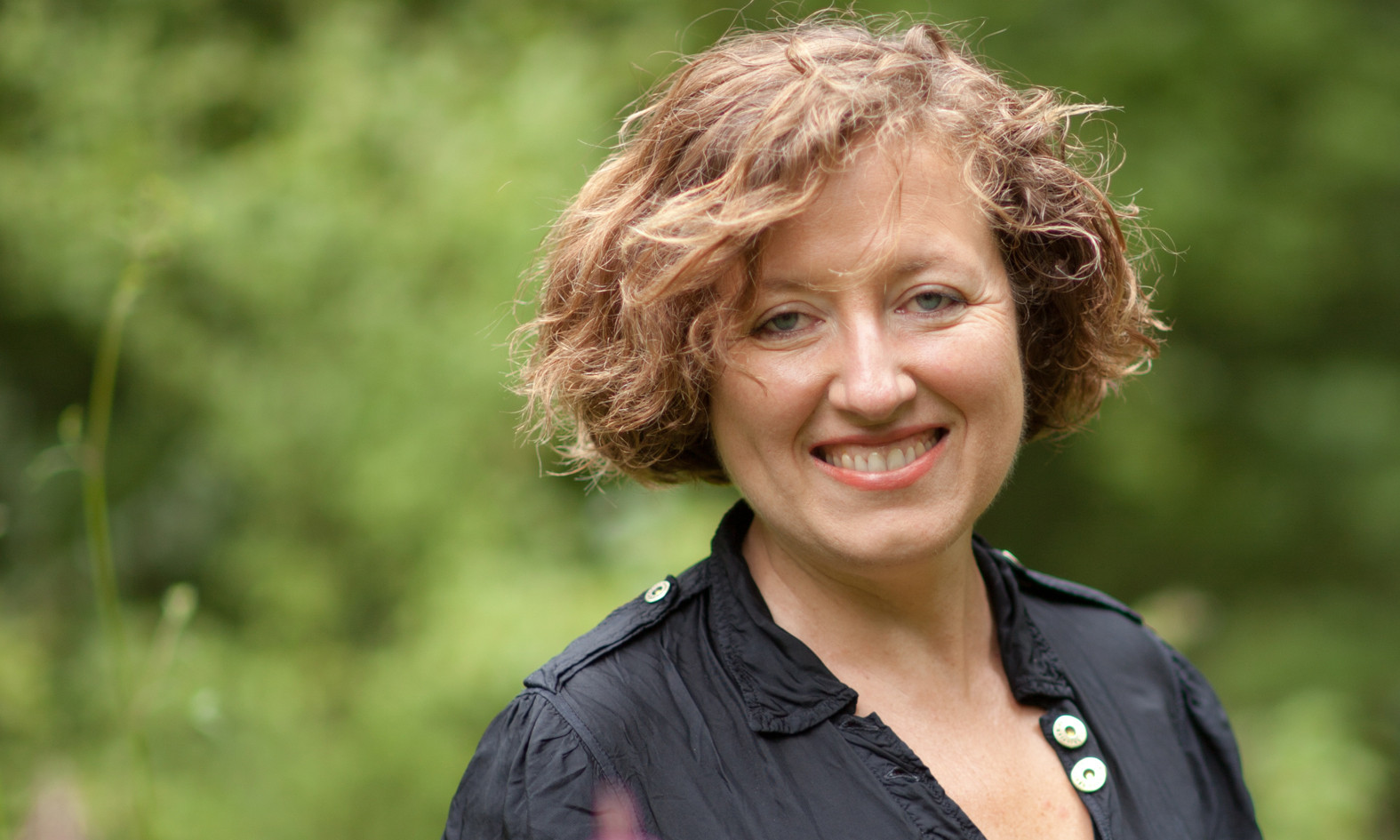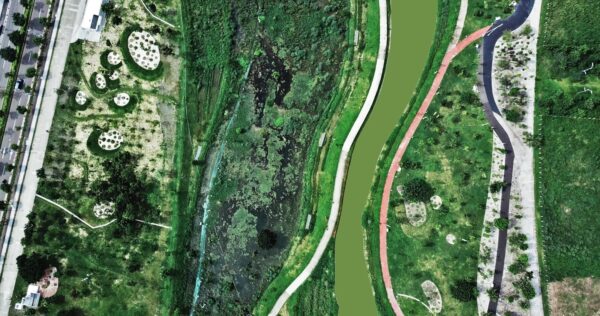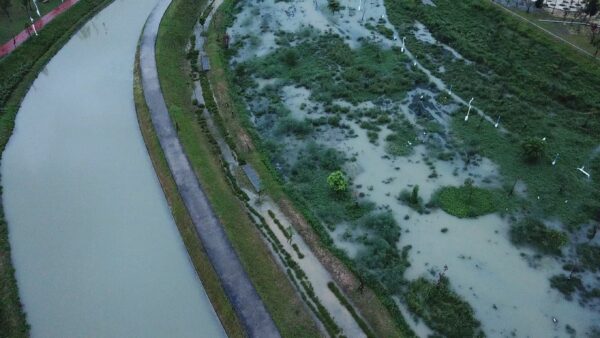
Welcome to the exclusive interview with the esteemed Catherine Mosbach, a visionary landscape architect and the founder of the Paris-based design firm mosbach paysagistes & the magazine Pages Paysages. With a remarkable career spanning diverse and innovative projects, Catherine has left an indelible mark on the world of landscape architecture.
Catherine’s key projects include the Solutre Archaeological Park in Saone-et-Loire, Walk Sluice of Saint-Denis, the Botanical Garden of Bordeaux, the other side in Quebec City, Shan Shui in Xian & Lost in Transition in Ulsan. She was the recipient of the Equerre D’argent award with Kazuyo Sejima & Ryue Nishizawa for the Louvre Lens Museum Park & was honoured in the Iconic Concept Award category by the German Design Council and Platine Award by INT.design 15th Montreal for Phase Shifts Park in Taichung. The team is honoured Firm of the Year 2021 in Landscape and Urban Design by Architecture Master Prize Los Angeles. Catherine was named a knight of the Legion of Honour proposed by the President of the Republic Francois Hollande in 2016. In the net of desires with ovvo studio explores the infinitesimal of the living by XXI Triennale de Milano 2017. Some of her latest essays are ‘emersion’, dialog Jerome Boutterin with Catherine Mosbach. Jerome Boutterin Reboot 1999-2022. (eds.) snoeck MMBOOKS BELGIQUE and ‘de passage’ la couleur en questions, directe by Michel Menu, Jean-Marie Schaeffer, RomainThomas; Collection la Nature de l’oeuvre, ed Hermann. 2023.
Most recently, mosbach paysagistes received the prestigious Landscape Architecture of the Year award, further affirming their influence and excellence in shaping the world’s landscapes.
We recently had the privilege of delving into Catherine’s creative process, her thoughts on the evolving landscape architecture industry, and her insights into the future of urban and natural environments. Join us as we explore the world of landscape architecture through the lens of a true innovator and pioneer, Catherine Mosbach.

Can you tell us a bit about your background? How did design come to have such an important role in your life?
I grew up in the countryside. I wanted to work in contact with nature. I didn’t have the level required to enter the Ecole d’Ingénieur des Eaux et Forêts. I decided to study the Physics and Chemistry section of the Natural Life Sciences at the University of Louis Pasteur in Strasbourg. In the guidance centers, There I discovered the Ecole Nationale Supérieure du Paysage de Versailles. The drawing took a while to mature because it wasn’t my favorite field. The biology-physics-chemistry dimension is anchored in my vision of the landscape project, a rare practice involving the exploration of living things from the perspective of a vision in real-time.
What was the inspiration or philosophy behind the design of Phase Shifts Park?
It is essential to reconcile the disciplinary polarities that at every attempt is made to set against each other in public debates. Man is as natural as a tree. Ecology is as much a cultural discipline as philosophy. This 250-hectare new urban development provides a meeting place for landscapes, and cultural events with animal, plant, and human populations, with respect for different ‘natures’. Given the humid tropical climate, people are not used to spending time outdoors. The monsoon season is, therefore, an opportunity for ‘landscapes in action’, seen as a drama-free ‘performance of the elements’.
The park was designed to be a living and breathing creature. Can you elaborate more on this concept and how it was accomplished in the design?
Two singular sensibilities and two singular itineraries, those of Philippe Rahm and myself have pooled their skills for the benefit of a public space. This should be a common ground by definition, but it’s far too rare in the professional practices of architecture, landscape, and engineering, where projects are too often lumped together without any real alliances in terms of substance. Design, on the one hand, plays with available resources, and the energies of the living, on the other, relay continuous regeneration.
You managed to uniquely combine lithosphere and atmospheric elements. What was the thought process behind this and what is its significance?
The challenge is to retain all the rainwater on a site with a slope of more than 2,7km, with the aim of replenishing the water table, which has been depleted in recent years due to shortages of drinking water. The balance of cut and fill required means that the roads can be crossed to ensure continuity of ownership, fauna-flora-inhabitants from north to south. This topographical work, macro, and micro, nourishes the soil at the same time as it cultivates water, in the sense that the volume of water rising from the ground to the sky is just as important as the volume descending from the clouds to the ground, in different forms. Fertile soil is home to a vast array of plant species, the key to ‘cultivating water’. In addition to the topography, the typologies and installations are fine-tuned according to the winds, the polluted particles from the roads, and the shadows cast by the future building fronts, so as to provide freshness and healthy air, away from the dampness of water in transit. Lithosphere and Atmosphere are inseparably linked for the common good.

What were the major challenges faced during the design and construction of Phase Shifts Park? What did you learn from designing the park?
Setting parameters down to the square centimeter on more than 67 hectares in order to achieve the expected performance is a challenge in the landscape field. This is where drawing is an invaluable tool, which the fashion of the moment tends to relegate to the background, on the pretext of ecological issues. The experience gained from past projects is not easy to pass on in a country where companies have few references in this field. The trusting relationship with the municipality helps to overcome certain obstacles, such as discovering that the teams did not understand the plans. An ambitious project owner who is courageous in the face of incomprehension and public doubt, who is wary of what he does not know, is just as essential as an enlightened project manager. One cannot exist without the other, which is the cornerstone of a long-term operation. It is in this respect that we need to nurture our clients’ appetite for ambitious projects. Awards help in this respect.
How does technology, like the Computational Fluid Dynamics simulations and the sensor mesh, contribute to the park’s sustainability and efficiency?
Technology is one of the pillars of understanding a site and the data to be mobilized for efficient performance. However, an instrument is no substitute for the mind and sensitivity. In this case, it’s a question of mobilizing all the tools simultaneously, not in a linear and deductive mode, but in an iterative mode. This is why excessive use of data is not a solution when it supplants the interpretation of competent players. Access to the data collected, and transcribed onto computers in the maintenance center, is a tool for understanding and anticipating fleet management, provided that the right staff are on hand.
What kind of interactions between visitors and the park’s features did you want to achieve when designing Phase Shifts Park?
The diversity of lands and situations according to the time of day, the seasons, and the growth of the trees is a source of inspiration for young and old alike. The places under bridges and tunnels’ crossing traffic lines offer instant freshness and a resonance chamber for the sound emitted, on par with that of a cathedral. These are ad hoc territories for all kinds of inspirations and artistic performances.
Congratulations on winning the Landscape Architecture of the Year prize! How does it feel to be recognized for your hard work?
The efforts and obstacles are considerable, but they are not superfluous in convincing elected representatives and professionals to be ambitious and to combine their efforts so that landscape, architecture, and the city evolve in good alliance. It is a universal challenge to learn to live well together and to dream together – the only way forward for humanity in the future.
Which advice would you give to aspiring landscape architects who want to make a significant impact in the field?
Cultivate an appetite for working in inter-skill synergy – architect, artist, botanist, ecologist, biologist… – to increase the potential of your work. Take care of your intuitions and your dreams and they will come true. Landscape architects have the interdisciplinary skills to offer this gift to the worlds of tomorrow.